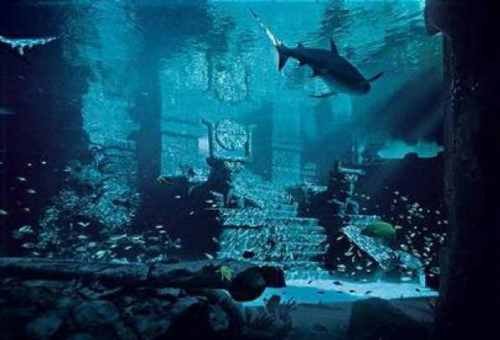Orichalcum: Mysterious Metal Linked To Legendary Atlantis Discovered In Shipwreck
MessageToEagle.com – Scientists have made an extraordinary finding while recovering an ancient ship that sank 2,600 years ago off the coast of Sicily.
Nothing similar has ever been found, said one of the researchers who participated in the expedition.
Gleaming cast metal called orichalcum, which was said by Ancient Greeks to be found in Atlantis was discovered in the old shipwreck.
The lumps of metal were arriving to Gela in southern Sicily, possibly coming from Greece or Asia Minor. The ship that was carrying them was likely caught in a storm and sunk just when it was about to enter the port.
“The wreck dates to the first half of the sixth century,” Sebastiano Tusa, Sicily’s superintendent of the Sea Office, told Discovery News. “It was found about 1,000 feet from Gela’s coast at a depth of 10 feet.”
According to the researchers, the 39 ingots found on the sandy sea floor represent a unique finding.
“Nothing similar has ever been found,” Tusa said. “We knew orichalcum from ancient texts and a few ornamental objects.”
Indeed orichalcum has long been considered a mysterious metal, its composition and origin are widely debated.
According to the ancient Greeks, it was invented by Cadmus, a Greek-Phoenician mythological character. The fourth century B.C. Greek philosopher Plato made orichalcum a legendary metal when he mentioned it in the Critias dialogue.
Describing Atlantis as flashing “with the red light of orichalcum,” he wrote that the metal, second only in value to gold, was mined in the mythical island and was used to cover Poseidon’s temple interior walls, columns and floors.
Today most scholars agree orichalcum is a brass-like alloy, which was made in antiquity by cementation. This process was achieved with the reaction of zinc ore, charcoal and copper metal in a crucible.
See also:
Lady Of Atlantis – Controversial Artifact Of Which True Origin Remains Obscure
Bolivia And The Mystery Of The Twins Of Atlantis
Hyperborea Or Atlantis Ruins: Underground Secrets Of The Sacred Lake On The Arctic Circle
Analyzed with X-ray fluorescence by Dario Panetta, of TQ – Tecnologies for Quality, the 39 ingots turned to be an alloy made with 75-80 percent copper, 15-20 percent zinc and small percentages of nickel, lead and iron.
“The finding confirms that about a century after its foundation in 689 B.C., Gela grew to become a wealthy city with artisan workshops specialized in the production of prized artifacts,” Tusa said.
The 39 ingots recovered from the wreck were indeed destined to these workshops and were used in high quality decorations.
According to Enrico Mattievich, a retired professor of physics who taught at the Federal University of Rio de Janeiro (UFRJ), the ingots are not properly made from orichalcum.
“It appears they are lumps of latone metal, an alloy of copper, zinc and lead,” he told Discovery News.
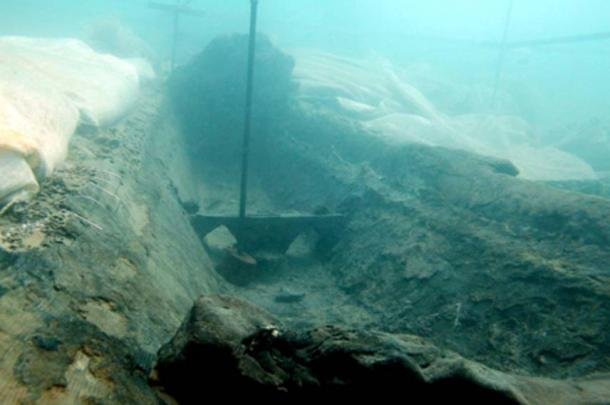
Mattievich, who has led a number of studies in physics applied to mineralogy, paleontology and archaeology, is one of the scholars who disagree on the brass-like nature of orichalcum.
While other scholars equated the mysterious metal to amber and to other copper based alloys, Mattievich believes orichalcum has its roots in the Peruvian Andes and in the Chavín civilization that developed there from 1200 B.C. to 200 B.C.
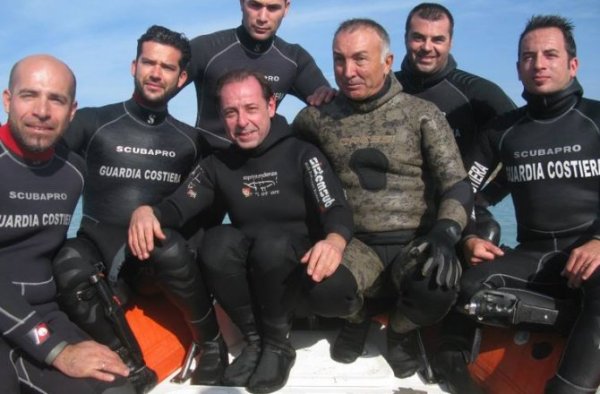
According to the scholar, who claimed in his book “Journey to the Mythological Inferno” that the ancient Greeks had discovered America, a metallic alloy “with fire-Iike reflections” similar to Plato’s description was found in a set of metallic jaguars of Chavin style, which turned to be made of 9 percent copper, 76 percent gold and 15 percent silver.
“It will provide us with precious information on Sicily’s most ancient economic history,” Tusa said.
Whatever the origins and nature of orichalcum, Tusa’s team plans to excavate the shipwreck and bring to light the entire cargo and hopefully we will soon learn more about this exciting finding.
MessageToEagle.com
Image courtesy of the Freer and Sackler Galleries, Smithsonian
Related Posts
-
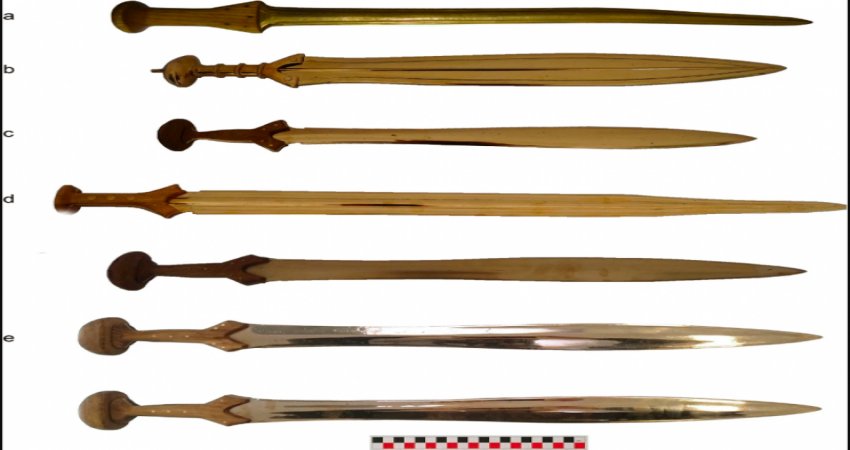 Bronze Age Swords Were Used By Skilled Fighters – New Study
No Comments | Apr 29, 2020
Bronze Age Swords Were Used By Skilled Fighters – New Study
No Comments | Apr 29, 2020 -
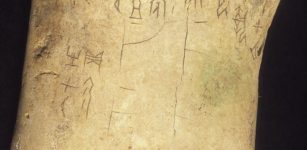 World’s First 3D Print Of A 3,000-Year-Old Chinese Oracle Bone – Created
No Comments | Mar 24, 2016
World’s First 3D Print Of A 3,000-Year-Old Chinese Oracle Bone – Created
No Comments | Mar 24, 2016 -
 Can This Ancient Coin Solve The Mysterious Disappearance Of Pirate Henry Every?
No Comments | Apr 2, 2021
Can This Ancient Coin Solve The Mysterious Disappearance Of Pirate Henry Every?
No Comments | Apr 2, 2021 -
 Ancient DNA Sheds Light On ‘Lost’ Indigenous People Of Uruguay And Reveals A Surprising Connection
No Comments | May 26, 2022
Ancient DNA Sheds Light On ‘Lost’ Indigenous People Of Uruguay And Reveals A Surprising Connection
No Comments | May 26, 2022 -
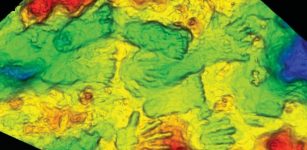 World’s Oldest Hand And Footprints Discovered On The Tibetan Plateau Are 226,000-Year-Old!
No Comments | Sep 15, 2021
World’s Oldest Hand And Footprints Discovered On The Tibetan Plateau Are 226,000-Year-Old!
No Comments | Sep 15, 2021 -
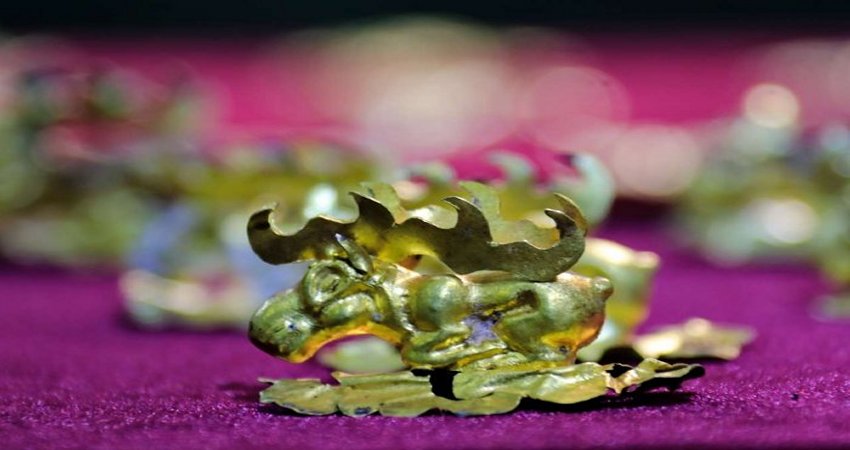 Gold Dated To Scythian-Saka Era Unearthed In Valley Of The Kings In East Kazakhstan
No Comments | Sep 15, 2020
Gold Dated To Scythian-Saka Era Unearthed In Valley Of The Kings In East Kazakhstan
No Comments | Sep 15, 2020 -
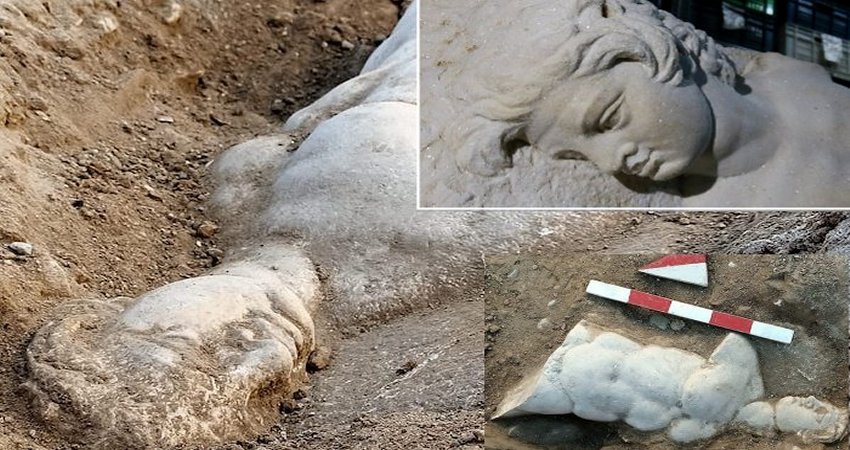 1,800-Year-Old Relief Of Mythological Satyr Figure Under Restoration
No Comments | Sep 6, 2020
1,800-Year-Old Relief Of Mythological Satyr Figure Under Restoration
No Comments | Sep 6, 2020 -
 Unexplained Rings On Iceland’s Peninsula Could Be Ruins Of Irish Settlement – Were Celtic Settlers Present Among Norse Vikings?
No Comments | Jan 24, 2017
Unexplained Rings On Iceland’s Peninsula Could Be Ruins Of Irish Settlement – Were Celtic Settlers Present Among Norse Vikings?
No Comments | Jan 24, 2017 -
 Ancient Road Used By The Teutonic Knights Discovered In A Lake In Poland
No Comments | Nov 8, 2021
Ancient Road Used By The Teutonic Knights Discovered In A Lake In Poland
No Comments | Nov 8, 2021 -
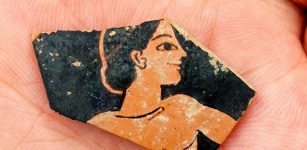 Previously Unknown 2,500-Year-Old City Unearthed North Of Athens
No Comments | Dec 13, 2016
Previously Unknown 2,500-Year-Old City Unearthed North Of Athens
No Comments | Dec 13, 2016

